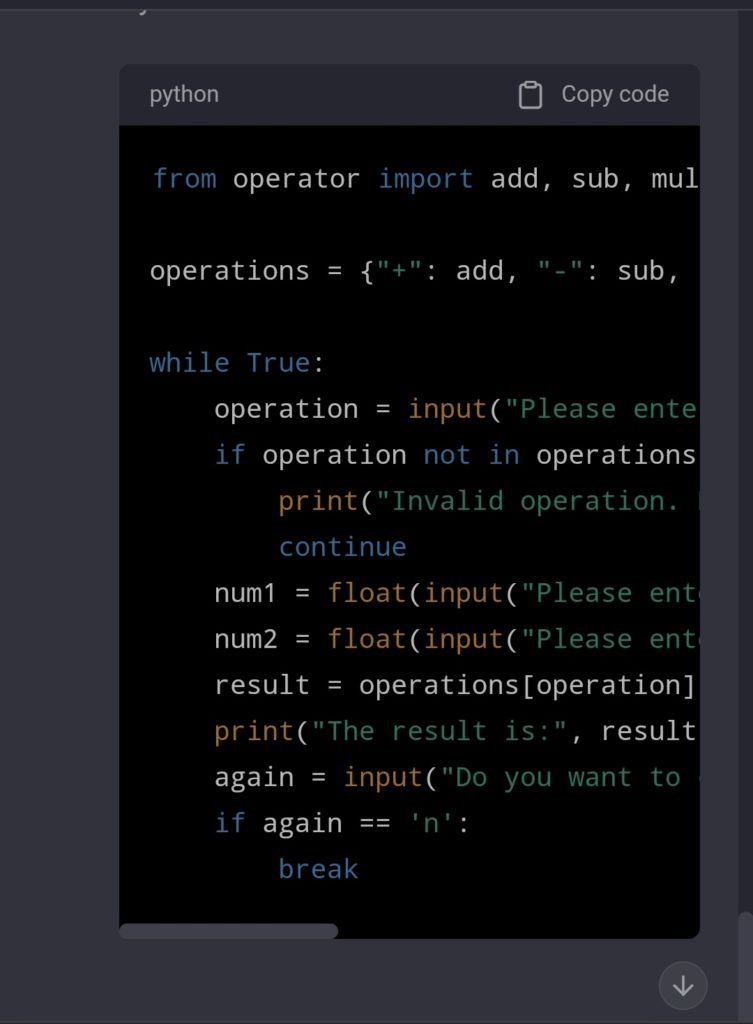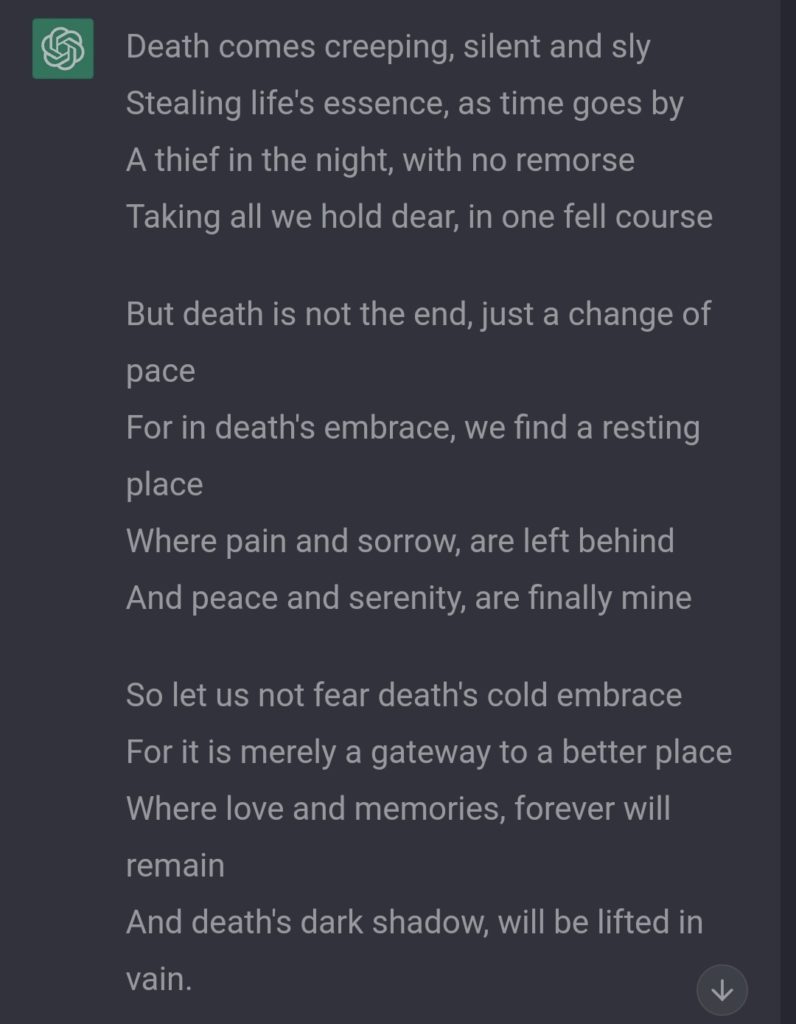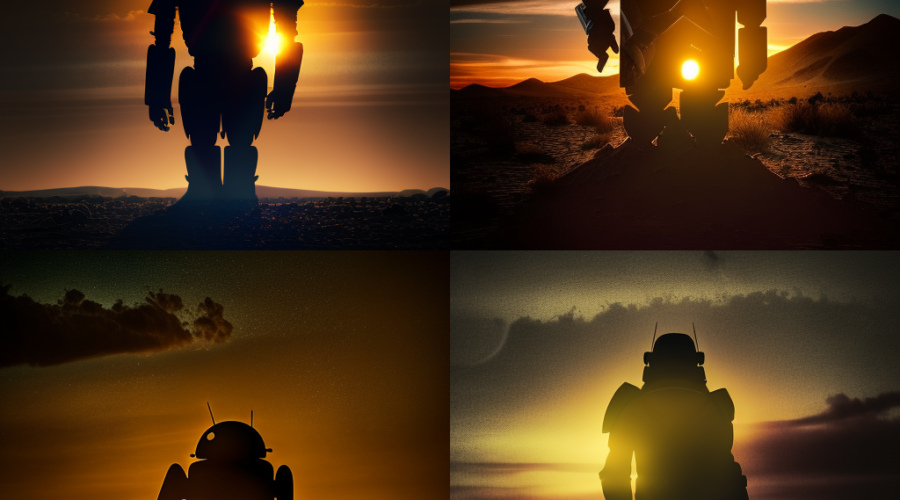Computer-Generated Artwork created by Midjourney A.I. based on the prompt “Ominous android backlit by rising sun, digital art.”
ChatGPT; sensation of artificial intelligence. A new program made to write and mimic human literary abilities. Is it our future, or our own grave?
What is ChatGPT;
ChatGPT is a chatbot tool created by the artificial intelligence firm OpenAI, intended to be able to write and interact with users. It is a tool that can write, if asked, anything from programming codes in an intended language, to full-fledged essays. It was first launched as a prototype on November 30th, 2020 – meaning it has been only 59 days since its launch. However, within that barely 59 days, the Bot took over the world showcasing the extent to which ‘writing AI’ programs can do. Raising concerns in academic spheres, and the future of writing as a form of human art. In this
In this article we will briefly explore how the program works, the dangers it can pose not only for the academic institution but to the creative industry, what it means for students, and the future of Artificial Intelligence.
Trying out ChatGPT;
To use the program, you have to just provide the bot with a prompt, including any details regarding the needed result. To better understand this new phenomena, here are couple of my prompts and results sustained by me:

Prompt 1: A 89 word essay on the 100 year war. Start the essay with a joke, end it with a quote.
As you can see, it was able to create a comprehensive output, within a ridicules word limit, following any structural detail I had provided it with.

Prompt 2: A complex and short python code for a calculator.
Even here too, it provided a complex code which efficiently did the requested request.

Prompt 3: A poem about Death
Even a simple line, a simple command, produced a generous amount of good work.
Dangers of ChatGPT;
Academic Dangers;
The obvious and real danger of this program is the issue of cheating. As the program outputs fully-fledged work, with no trace of plagiarism, it can make it harder for academic institutions to ensure students are doing their work and are not just utilizing tools such as ChatGPT. Right now the implemented precautions are having hidden and untraceable trademarks within any output work which plagiarism software such as TurnItIn can easily trace. Furthermore, most plagiarism software used by schools and universities has inbuilt systems which analyze language structure, as there is a clear style these AI bots have. Meaning, in most cases, academic institutions can identify any work created using this new program.
However, how can I utilize the program to my benefit?
ChatGPT is a great tool to get inspired or find information quickly. If you need to write an essay or do research in some field, and you are stuck, or unable to find any good resources, ChatGPT can help you find them. Asking the program to help you find specific sources (scientific papers, helpful websites, specific interviews, etc…) is helpful at the beginning of your work, yet it is highly recommended to never use it beyond that limit.
Artistic Dangers;
Some people have raised their concerns about the future of certain artistic fields. Professions such as writing or content creation have high chances of dying out as a result of the possible improvements and growths in software such as ChatGPT. If these programs are well trained, they can develop the ability to mimic human literary abilities, and mass produce writings. For many companies, profit is their largest endeavor, and in the same sense, if a program could replicate the works of dozens of writers within hours, it is a better alternative with a higher profit margin. Additionally, some YouTubers have raised their concern about the possibility of being replaced. With the increase in deep fake AI software, programs that can replicate realistic CGI fakes of individuals, who says people will not utilize deep fake with chatbots to fabricate a youtube identity? There have been some YouTubers, such as Garnt Maneetapho, who had shown that ChatGPT, with a little training, could replicate a whole new youtube script for him. The script had everything unique and specific to Garnt Maneeapho. It even included jokes and ideas Grant himself was thinking of doing for the prompt yet had not included within the request. This showcases how the program can evolve and master a certain personality and identity with little training available. You can hear more about his experience on his podcast. (Trash Taste is Testing A.I. to Replace Themselves)

Currently, the complete replacement of writers and content, as the tool is new and is mainly still in development but does raise a questionable and concerning future for us. One component of humans we always assumed will not be able to be replicated was the artistic components, yet ChatGPT, and even AI art, has shown that it is only about time for everything to have its machinery counterpart.
Furthermore, I would argue that students could benefit from the ability to explore artistic identity through AI. The implementation of programs that can help students get inspired, or even explore the Internet of Things differently, is crucial for future human development. The current growing generation, generation alpha, has the opportunity to move the human identity from centuries-old, non-internet-based, views to more modern ideals. Such a change is crucial in creating a society that is not trapped by generational and historical restraints of old human morality and ideas. AI is a clear player in such a change, as the implementation of technology within the expressionist element of humans, an element many people argue is the most important for humans and our progress, will fully push the generation to act upon a more tech-dependent identity. Some people will confront this as a big rising issue, and I also see the possible dangers and ill consequences of such a change, yet it may also be a blessing in disguise. What kind of blessing you may ask? A questionable yet unknown and intriguing one. It is hard to predict what it will be, but it can in the end be our savior or destroyer.
Future of AI;
The future of AI is ever concerning, even though we will not be here to witness it. From my observations, AI will develop rapidly in the coming years, yet its ability to sustain and replace humans in any industry is questionable. Whenever there is a new AI component that can replace humans, such as the artistic element or even factory workers, there will always be a delay in its implementation. Human changes and adaptation to social demands are slow, and even if companies have an opportunity to switch to a more effective tool with lower costs, most companies will take decades to do so. I can see companies replacing humans in factories, allowing these jobs to be fully automated, yet it will take at least 2-3 generations for it to become a norm. Humans had their accelerated progress and expansionism in the 20th century, yet it is our moment of dismay and the ethical consideration of the ever-growing AI field that will slow it down. Furthermore, I do not see governments allowing sudden mass unemployment rise as a result of companies replacing human workers. Most likely, certain regulations will be implemented to ensure a controlled and monitored transformation of working environments. Meaning, by the time when it may be a norm, where AI runs the world, we will be long gone.
Bibliography
Murphy, Tom. The south wing of the Upper Library of Merton College, Oxford. commons.wikepedia.com. https://commons.wikimedia.org/wiki/File:Merton_College_library_hall.jpg
“Trash Taste is Testing A.I. to Replace Themselves.” Youtube, uploaded by Trash Taste, 22 January 2022. https://youtu.be/duPXme1BGB8

